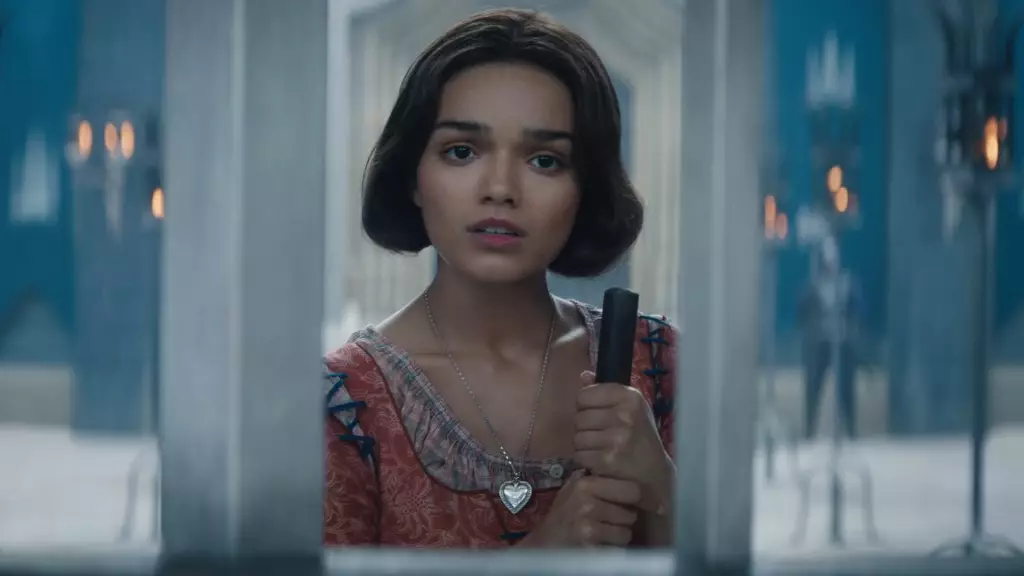Disney’s recent live-action adaptation of “Snow White” has become a case study in risk versus reward in the film industry, leading to an unsettling forecast of a whopping $115 million loss. Industry sources predict that after factoring in all revenue from global home entertainment, digital streaming on Disney+, and ancillary revenues, “Snow White” is set to underperform significantly. With an anticipated worldwide box office haul of $225 million — made up of $100 million from domestic viewership and an overseas income of $125 million — Disney’s latest effort to revive a classic appears to be a costly miscalculation.
The immediate critiques stem not only from box office numbers but also from the film’s performance indicators. On its second weekend, with a staggering 66% drop to $14.2 million domestically, it became evident that the film lacked the staying power of previous remakes like “Dumbo” and the “Maleficent” series. A mere $36.3 million earned globally during its second weekend adds to the mounting concerns surrounding how audiences perceive remakes of time-honored stories.
A Behind-the-Scenes Nightmare
Examining the production and marketing budget reveals the tumultuous journey “Snow White” took before reaching the silver screen. With a total expenditure of $410 million, which includes a $270 million production cost — driven up by production halts due to strikes and even a fire on set — it’s evident that the film’s financial strategy was fraught with challenges from the beginning. The $111 million allocated for global promotion and advertising indicates that Disney hoped to generate considerable pre-release buzz, but results tell a different story.
Compounding the production woes, Disney must consider ancillary revenue streams more innovatively. While $2 million in merchandise sales seems nominal compared to the colossal budget, it’s uncertain how streaming revenues may bolster the film’s financial standing when it hits Disney+. The marketing missteps of past films, like “Solo: A Star Wars Story,” highlight the critical impact of brand perception and public dialogue on box office performance and could signify a rift between Disney’s traditional audience and contemporary consumer expectations.
Social Media: A Double-Edged Sword
The film’s lead, Rachel Zegler, has previously sparked controversy with her vocal opinions on casting and representation, proving that in today’s digital age, public relations can swiftly spiral out of control. While her artistic talent is undeniable, her engagement with social media trolls concerning her role as a Latina Snow White might have driven audiences away before they even saw the film.
Disney faces a formidable setback; negative publicity is potent poison for any entertainment endeavor. Earlier controversies have sunk flicks before, demonstrating that the line between engaging digital dialogues and harmful public backlash is razor-thin. Clearly, Disney would be wise to take these lessons into account when planning future projects.
The Struggle of Classic Adaptations
It’s crucial to recognize the broader implications of Disney’s strategy to reimagine beloved animated classics. The mixed outcomes of live-action adaptations like “Dumbo” and “Maleficent” suggest that audiences have increasingly specific tastes influenced by contemporary narratives and visuals. “Snow White” is not just a retelling; it’s a product of a rekindled conflict between nostalgia and modern storytelling sensibilities, making Disney’s choices seem even more precarious. The shadow of successful adaptations like “Alice in Wonderland,” which capitalized on a unique stylistic vision, looms large.
The stakes have changed dramatically since the late ’80s and ’90s, when animated classics were released to wide acclaim and commercial success. Disney must now contend with an evolving landscape where audiences expect innovative storytelling rather than simple remakes. As “Snow White” demonstrates, the magic that once carried Disney’s adaptations might not be as enchanting when the nostalgia veers into cliché territory.
The Road Ahead for Disney
Looking toward the future, Disney needs to reimagine its approach to classic adaptations while embracing opportunities to engage with diverse narratives authentically and proactively. The film industry isn’t just evolving; it’s continually reshaping the fabric of storytelling and audience interaction.
By deploying marketing strategies that leverage the influence of social media while acknowledging potential pitfalls, Disney can foster a more constructive dialogue around new projects. Establishing early screenings with audiences and influencers could pave the way for a more grounded reception, easing audiences into the reimagined fairy tales rather than pushing them away. The challenge ahead is not just to reclaim lost revenues but to rediscover the magic that first drew audiences into Disney’s enchanted worlds.
